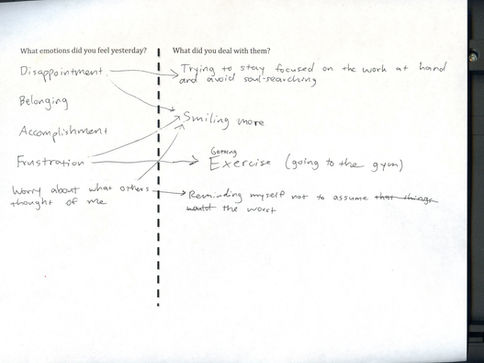Stanford is not dog eat dog; it's dog eat self.

Client / Org
Stanford2025
Role
Design Research
Industry
Higher Education
Highlights
Analogous research, expert interviews, user maps, field observations
The @Stanford Project
In Spring 2013, Stanford University’s Office of the Vice Provost for Online Learning and the Dean of the School of Engineering engaged the d.school to re-imagine living and learning in higher education. The project, which included a close partnership with the Experience Institute, was a response to a larger ongoing conversation about redesigning traditional university schooling, particularly with the rise of gap year programs, MOOCs, and new forms of online accreditation.
“One size fits all” learning was becoming a relic of the past. What would the Stanford experience look like in 2025? I joined one of the first @Stanford studio d.school design teams to dig deep into current and future developments in higher ed.
Team and

I worked with two other designers to form team Heart and Mind during phase one of the @Stanford Project. We focused on the world-class education of whole people, or individuals who would possess the resilience and coping mechanisms to navigate four intense years of uncharted territory.
The Challenge
Throughout a rigorous 4-year academic experience, how might we help students feel and deal when unexpected life challenges surface?
Early Explorations
Parents, counselors, neighbors, coaches, and other influencers will tell incoming first-years that “your college years are some of the best times of your life.”
It’s an exhilarating journey of freedom, but inevitably, there are lonely, alienating, and confusing moments, too. We kicked off our research by mapping out some of the tensions, rules, and norms wrapped up in the busy life of a college student.

Norms established freshman year

Mapping tensions

Personal challenges for students

Norms established freshman year
Analogous + Parallel Research
Our team wanted talk to people who routinely experience a sense of peace in their daily trials, and we turned to spiritual leaders as an analogous research group. People whose whole livelihood existed at the intersection of heart and mind would surely have some valuable truths to share. We also interviewed a few undergraduates who took time off for personal exploration before they began their Stanford education.
Heart icon by il Capitano from the Noun Project
Brain icon by Alina Oleynik from the Noun Project
Rubber Ducky by John Morgan

My teammates and I spoke to reverends, rabbis, and Buddhist teachers. We visited interfaith centers, attended a communal meditative therapy meeting, and held personal development workshops for the students in Stanford residence halls.
We listened to interviewees talk about feeling okay with feeling scared. We heard others describe rites of passage and heaps of self-judgement. Below is what we found.
"Soul-searching is not productive"
- Nick, sophomore
- Reverend C.
"The most emotionally enlightened are those who have been the most broken"
Key Quotes

IDEATION
Flare
Focus
Solution Space
Outcomes
The “Stanford Duck Syndrome” is a phenomenon widely understood among members of the Stanford community. Well-recognized by the university, the metaphor describes undergraduate ducks who appear to glide along the water effortlessly, all the while paddling madly underneath the surface to stay afloat.
From Ducks to Directors
Team Heart and Mind emerged from research and ideation ready to fight the “duck syndrome” style of pretending never to struggle. The spiritual leaders we spoke to were certainly not immune from fear, doubt, or loneliness, nor did they ever claim to lead perpetually serene lives. The common unifier among all these individuals was that in daily practice, they knew they could wrestle unexpected challenges thanks to a support system they trusted and valued.
Instead of handing new students a long list of resources in case they needed help during their four years, we wanted to shift the mentality to “you will need help, and your own resource team will be there for you.” This led to our recommendation for university-wide adoption of the “Personal Development Board of Directors,” a special team of advisors new students would carefully select in their first year. Pictured below is the final iteration of the personal board concept, included in the Stanford2025 exhibit and Stanford2025 materials developed by the d.school.















